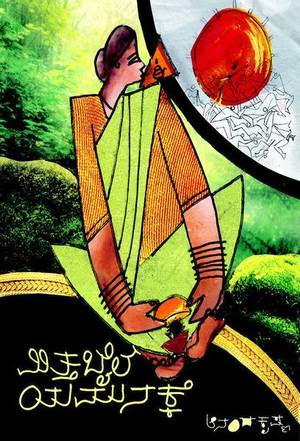
Tulu novel translated into English, first in ten years
Mangalore Today News Network
Mangaluru, Dec 31, 2017: One prominent Tulu novel is,’Mittabail Yamunakke’, published more than a decade ago has been translated into English and is set to be released in Jan 2018.

This is the second Tulu novel coming out in English avatar, the first being Janaki Brahmavar’s Kuduruda Kedage as Islet’s Screwpine in 2004.
The work of artist D.K. Chowta, Mittabail Yamunakke was published in 2005. After it received considerable appreciation and applause, the novel won the Paniyadi Award for the best novel in Tulu in 2006. The novel was translated into Kannada in 2008 by Mohammed Kulai, which helped the Kannada readers to savour many aspects of Tulu culture and its sensitive portrayal by the novelist.
Now, two retired professors of Mangalore University — B. Surendra Rao and K. Chinnappa Gowda — have introduced it to English readers as Mittabail Yamunakka . Mr. Rao was a professor of History and is a critic. Mr. Gowda, who retired as Kannada professor in the university was also the former Vice-Chancellor of Karnataka Folklore University.
A real mission : We have translated the novel from the Tulu original. The translation from Tulu to English can be somewhat daunting, particularly when the novel is thickly suffused with Tulu sensibilities and idioms, they told The Hindu .
We have tried our best to be faithful to the Tulu original, while at the same time reconcile its narrative idiosyncrasies with those of English. The rich cultural descriptions which embellish the novel have been retained. Hence those who are not familiar with them may savour them, they said. After reading its Kannada version, Jnanpith Award winner the late U.R. Ananthamurthy had written that it was one of the best novels written in any of the Indian languages, they said.
The 375-page novel is about the making and near-unmaking of a landlord’s house in Tulunadu, its fortunes, vicissitudes, and resilience, and about the persons and forces that participated in them. Its spatial frame is the region around Manjeshwara, near Mangaluru. The novel brings within its orbit several communities and interests that make up the agrarian order of Tulunadu. The novel itself is named after an exceptional woman who manages the house in a most manly manner, takes on the enemies more ruthlessly than any man would and works to restore its fortunes from the dilapidation to which it was pushed to by her vicious, libidinous predecessor.
The translated work would be released by the Karnataka Tulu Sahitya Academy.
Earlier this year, Mr. Rao and Mr. Gowda translated 114 modern Tulu poems (Ladle in a Golden Bowl) and 64 Tulu folk tales ( The Rain Boy ). The latter is yet to be released by the Chair in Kannada, Centre for Indian Languages, Jawaharlal Nehru University, New Delhi.
1930 was the beginning : Tulu novels made their debut in the 1930s. Mithyanarayana Kathe by N.A. Sheenappa Hegde (1935) and Sati Kamale by S.U. Paniyadi (1936) were the first two works worth mentioning.
Interestingly, after the first flush of interest in Tulu novels, there was a somewhat long gap which is hard to explain, according to B. Surendra Rao and K. Chinnappa Gowda, retired professors of Mangalore University.
The revival of interest began only in the 1980s, and that too in the form of translations of Kannada novels into Tulu. Independent Tulu novels started appearing again from the 1990s, with the publication of Narnajjeru Sude Tirgayerby Mahalinga Bhat in 1994, they said.